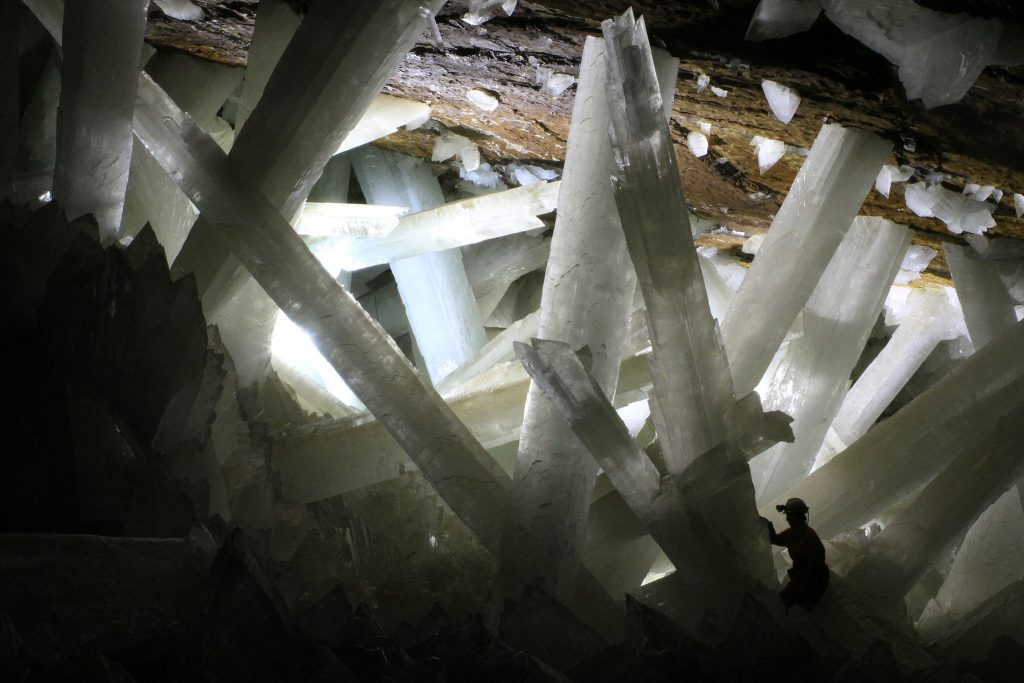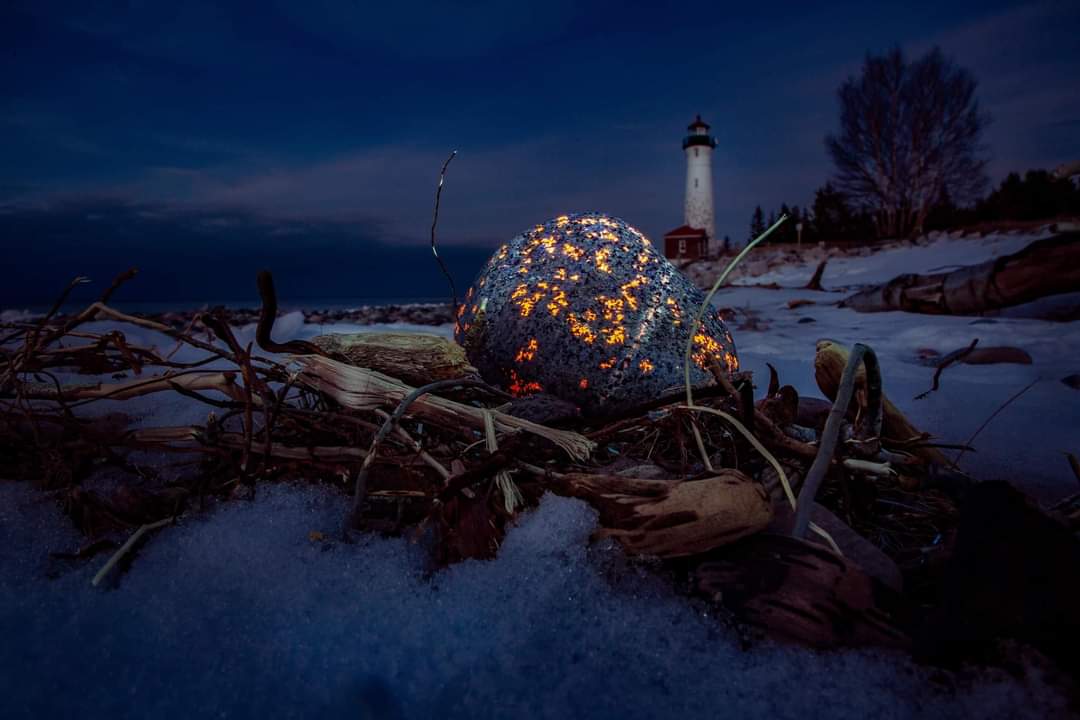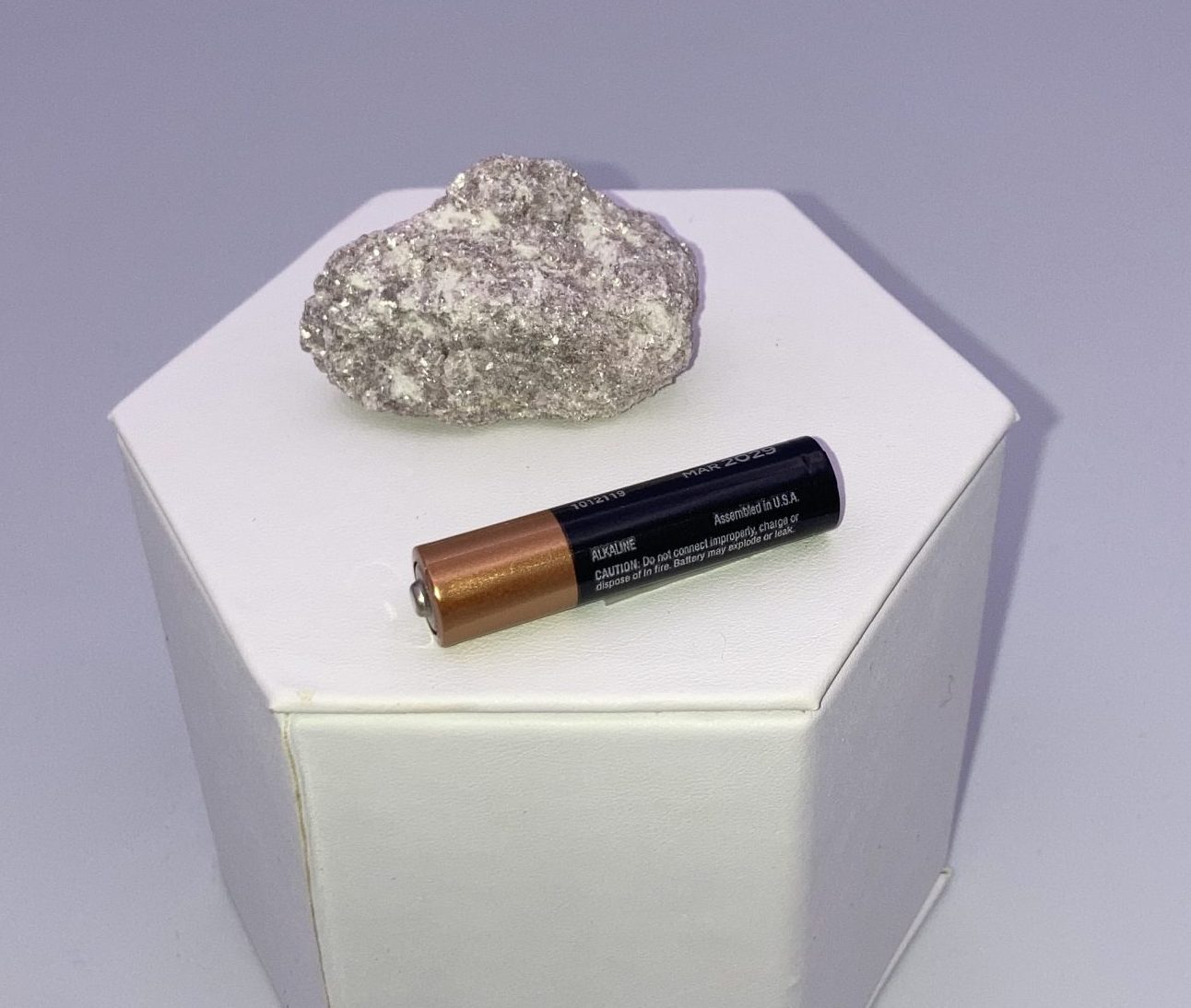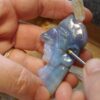As one enters the Rock and Mineral Experience at the new Lizzadro Museum, they are treated to a beautiful image of the Cave of the Crystals.

No, this is not a photoshopped image. This amazing cave is part of the Naica Mine, a lead, zinc, and silver mine located near Chihuahua, Mexico. The owner, Industrias Peñoles, is the world’s largest silver producer. In 1910, miners discovered the Cave of Swords, 390 feet above the Cave of the Crystals. The selenite crystals of this cave, while impressive, are significantly smaller compared to the Cave of the Crystals.
Nearly a century later, in April 2000, the Cave of the Crystals was discovered when mining operations to haul up lead and silver involved pumping groundwater out of the vast underground caverns. The selenite in this cave formed massive crystals crisscrossing the cavity, jutting out from the ceiling, and covering the floor with crystalline blocks. Selenite is a form of gypsum, a calcium sulfate, commonly mined for commercial purposes. The largest crystal found in the Cave of the Crystals measured 39 feet long, 13 feet in diameter, and weighing in at 55 tons! The interior of the cave was extremely hot, reaching temperatures up to 136°F with 90-99% humidity. Without proper protection, scientists and visitors to the cave were only able to endure 10 minutes at a time. Containment suits allowed scientists to collect data while preserving the environment with relatively little outside influence.
Both the Cave of Swords and Crystals were formed by the underlying magmatic system. The mine lies along a fault line, above a magma chamber. Magma heated groundwater, which was saturated in sulfide ions (see the post about agates for more information about supersaturation processes). This heated, sulfur-rich water interacted with cooler groundwater, ultimately resulting in the creation of a mineral called anhydrite. As the temperature of the caverns cooled, the anhydrite dissolved into selenite, a process that took at least 500,000 years! Due to the differences in depth, the Cave of the Crystals was subject to higher temperatures allowing for significantly larger crystal growth.
The Cave of the Crystals was allowed to re-flood in October 2015, making it completely inaccessible for exploration. However, during the 15 years it was open, scientists from all over the world were able to study this magnificent display. Data collected from the Cave of the Crystals continues to expand the fields of crystallography, mineralogy, microbiology, and geochemistry.
To explore the world of how rocks and minerals grow in cave systems, try this experiment at home.
Make Ice Stalagmites










